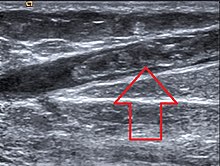Signs and Symptoms
- Pain in the affected area
- Skin redness and inflammation
- Edema (swelling)
- Veins become hard and cord-like
- Tenderness
Complications
- Superficial blood clot associated with deep vein thrombosis
- Pulmonary embolism, which can be life-threatening
- Dislodgement and travel of the clot through the heart
- Occlusion of the dense capillary network of the lungs
- Increased risk of complications when thrombophlebitis occurs
Causes
- Deep vein thrombosis in the right leg
- Disorders related to increased tendency for blood clotting
- Reduced speed of blood flow in the veins
- Prolonged immobility
- High estrogen states such as pregnancy, estrogen replacement therapy, or oral contraceptives
Diagnosis
- Diagnosis primarily based on the appearance of the affected area
- Frequent checks of pulse, blood pressure, and temperature
- Tests may be performed to determine the cause, such as Doppler ultrasound or extremity arteriography
Prevention
- Walking regularly
- Drinking plenty of fluids
- Changing IV lines if currently hospitalised
- Walking after a long period of sitting, especially during travel
- Taking preventive measures to reduce the risk of thrombophlebitis
Thrombophlebitis is a phlebitis (inflammation of a vein) related to a thrombus (blood clot). When it occurs repeatedly in different locations, it is known as thrombophlebitis migrans (migratory thrombophlebitis).
| Thrombophlebitis | |
|---|---|
| Other names | Phlebitis |
 | |
| Ultrasonographic image showing thrombosis of the great saphenous vein. | |
| Specialty | Cardiology |
| Symptoms | Skin redness |
| Risk factors | Smoking, Lupus |
| Diagnostic method | Doppler ultrasound, Venography |
| Treatment | Blood thinners, Pain medication |
thrombo- + phlebitis
thrombophlebitis (countable and uncountable, plural thrombophlebitides)